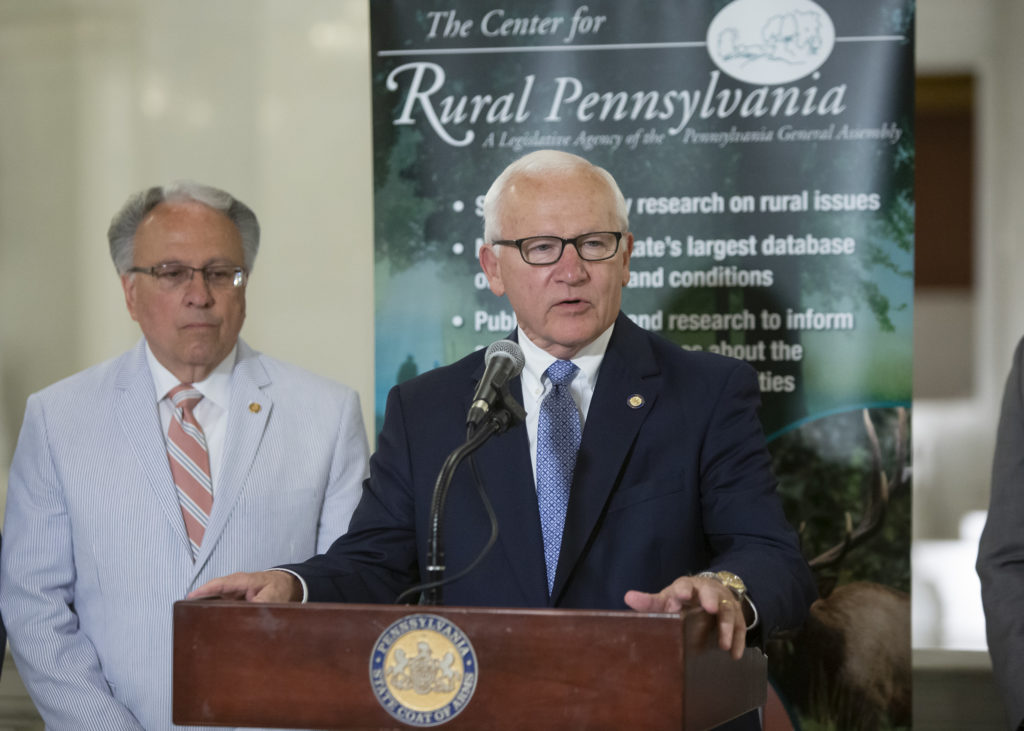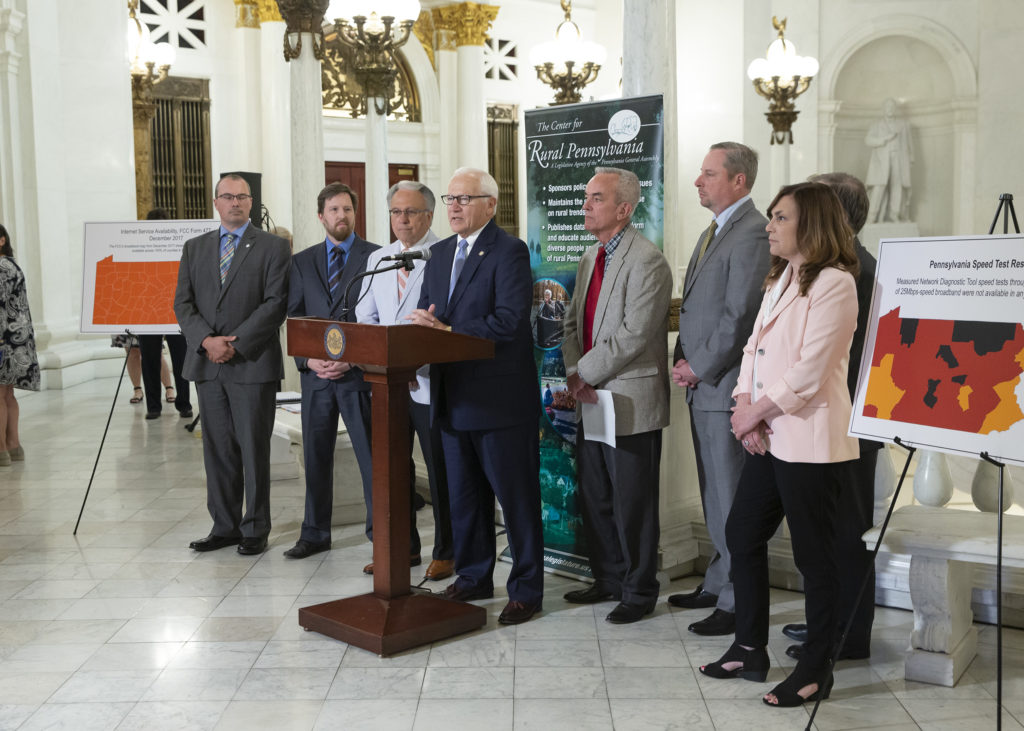Sen. Yaw Remarks
Full CRP Press Conference
HARRISBURG – Results from a year-long research project measuring median broadband speeds across Pennsylvania indicate there isn’t a single Pennsylvania county where at least 50 percent of the population received “broadband” connectivity, defined by the Federal Communications Commission (FCC) as 25 megabits download speed and 3 megabits upload speed.
While the FCC has noted that more than 800,000 Pennsylvania residents do not have access to broadband connectivity, this new research indicates that these official estimates are downplaying the true state of the digital divide in Pennsylvania because they rely on self-reported data by Internet Service Providers (ISPs).
The research, Broadband Availability and Access in Rural Pennsylvania, was conducted by Penn State University’s Palmer Chair in Telecommunications Sascha Meinrath and a team of researchers who developed a replicable research methodology using open source tools for collecting broadband data. The research was sponsored by the Center for Rural Pennsylvania, an agency of the Pennsylvania General Assembly.
“No one can deny the importance of high-speed connectivity in today’s global society,” said Sen. Gene Yaw, Center for Rural Pennsylvania board chairman. “As we’ve heard over the past few years, many residents in Pennsylvania do not have quality access to broadband and are missing out on economic, educational, health care and recreational opportunities.
“This research mapped out the levels of actual connectivity speeds that Pennsylvanians experienced while participating in a broadband test,” Sen. Yaw said. “The maps produced from these tests show that a digital divide in Pennsylvania is real, and that connectivity speeds are substantially slower in our rural counties.”
Throughout the course of the study, which was conducted in 2018, the research team collected more than 11 million broadband speed tests from across Pennsylvania and found that median speeds across most areas of the state did not meet the FCC’s criteria to qualify as a broadband connection.
By combining 2018 data with a historical archive of an additional 15 million tests from Pennsylvania residents, the research team identified that, since 2014, the discrepancy between ISPs’ self-reported broadband availability in the FCC’s broadband maps and the speed test results collected through the research has grown substantially in rural areas and not in urban areas. This could indicate a systematic and growing overstatement of broadband service available in rural communities.
The research clearly acknowledges a host of reasons why it has been difficult to deploy higher speed broadband to all rural areas.
“We know that topography, infrastructure access, population density and even consumer ability to pay all contribute to the current situation,” Sen. Yaw said. “However, the Penn State-led team of researchers identified examples where unique partnerships, cooperative initiatives, and support from federal, state and local governments, private businesses, and nonprofits are working to bring universal, high-quality broadband to all Pennsylvanians.”
Click here for the report, as well as links to the research tools and data.
 |
 |
The Center for Rural Pennsylvania’s Board of Directors, chaired by state Senator Gene Yaw (R-23), today released a report on broadband availability and access in Pennsylvania during a press conference at the State Capitol Building.
Contact:
Barry Denk, Director
(717) 787-9555
denkb@rural.palegislature.us
Christine Caldara Piatos, Communications Manager
(717) 787-9555
caldarac@rural.palegislature.us
www.facebook.com/RuralPennsylvania
@CenterRuralPa


